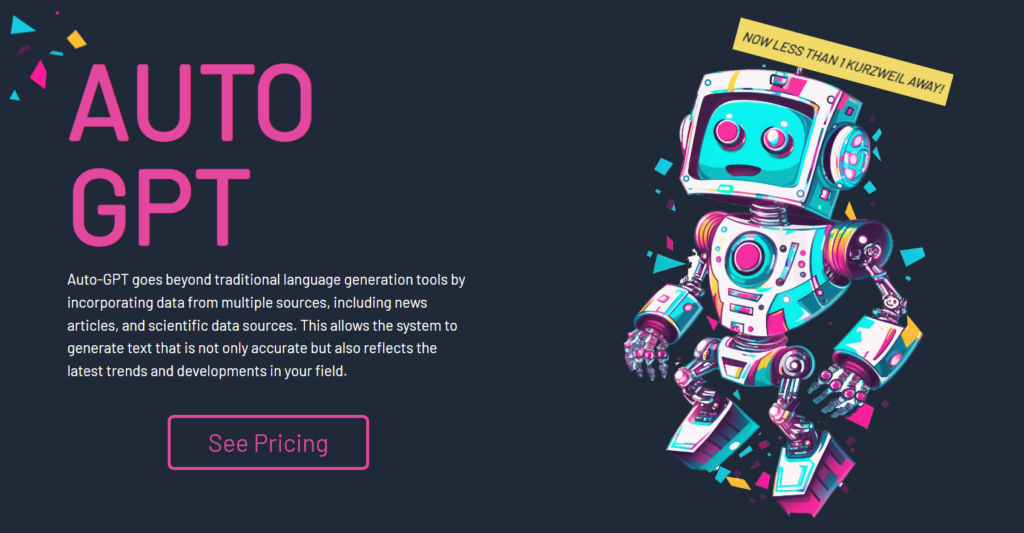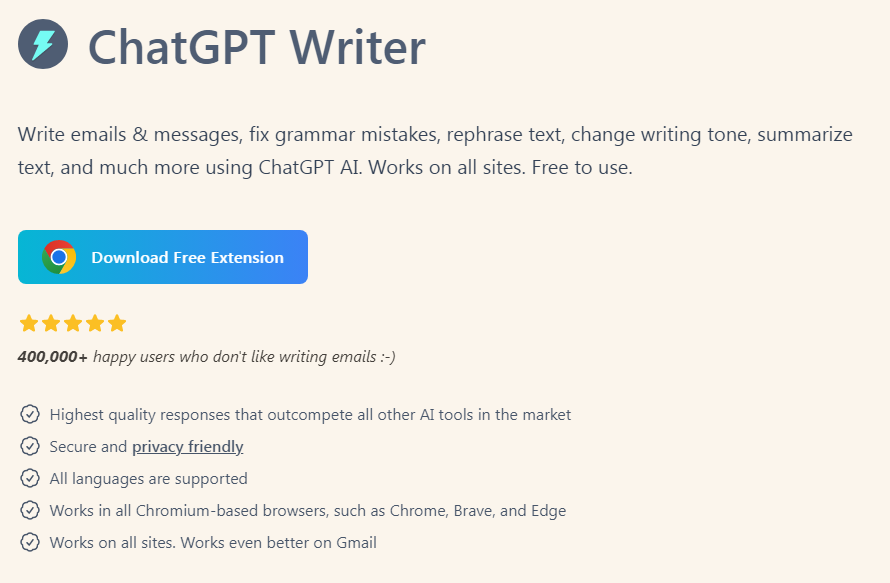The extraordinary success of ChatGPT has shone a spotlight on the immense power of AI tools.
Millions of users worldwide have eagerly embraced AI technology and harnessed its capabilities to achieve remarkable feats.
Just as ChatGPT captivated the world, Auto GPT now enters the stage, equipped with a diverse array of cutting-edge technologies.
If you’re eager to delve into every intricate detail about Auto GPT, you’ve come to the perfect spot!
This article offers the latest and most enticing insights about this groundbreaking innovation.
So sit back, relax, and prepare to sip on a piping hot cup of GP(Tea) as we unravel the wonders of Auto GPT.
AutoGPT vs ChatGPT
Despite AutoGPT and ChatGPT being based on the GPT-4 architecture, there is little information to differentiate the two.
As of now, the specific distinctions in terms of language capabilities and functionalities between AutoGPT and ChatGPT remain unclear.
Further exploration and research will be necessary to gain a comprehensive understanding of the unique characteristics and features that set these AI models apart.
What is AutoGPT?
- Automates the execution of entire tasks based on received instructions.
- Capable of handling more extensive tasks such as website creation, article writing, marketing, etc.
- Accesses information from the web, social media, processed data, market trends, and consumer behaviour.
- Executes tasks autonomously without requiring step-by-step instructions.
- It has a broader scope and can utilize a wider range of data sources for task execution.
What is ChatGPT?
- Provides information and answers queries independently.
- Requires specific instructions for each step to provide relevant information.
- Limited to answering queries based on the training data it has received.
- Primarily focuses on responding to individual queries rather than executing complex tasks.
- Relies on a narrower data set for generating responses.
AutoGPT demonstrates greater autonomy and the ability to perform larger-scale tasks by leveraging a variety of data sources, while ChatGPT specializes in providing information and addressing individual queries within the confines of its training data.
Applications of Auto GPT
AutoGPT, with its automated task execution capabilities, finds applications across various domains. Here are some notable applications of AutoGPT:
1. Automation of Content Generation:
AutoGPT allows for the automation of content creation tasks, including articles, product descriptions, blog posts, and social media posts.
It can analyze relevant data and market trends to generate engaging and informative content.
2. Web Development:
AutoGPT can assist in automating aspects of web development by generating code snippets, designing website layouts, and implementing desired functionalities based on user instructions.
This streamlines the website creation process and reduces manual effort.
3. Marketing and Advertising:
Auto GPT can contribute to marketing and advertising campaigns by analyzing market data, consumer behaviour, and competitor analysis.
It can generate advertising copy, campaign slogans, and promotional content to optimize marketing strategies.
4. Data Analysis and Insights:
Auto GPT can process large datasets and extract valuable insights, trends, and patterns.
It can assist in data analysis, forecasting, and decision-making by providing automated reports, data visualizations, and recommendations.
5. Virtual Assistants:
Auto GPT can be integrated into virtual assistant applications to provide personalized responses, answer user queries, and perform tasks such as setting reminders, scheduling appointments, and retrieving relevant information.
6. Customer Support:
Auto GPT can enhance customer support services by automating responses to frequently asked questions, providing self-help resources, and assisting with basic troubleshooting.
7. E-commerce Applications:
Auto GPT can contribute to e-commerce platforms by generating product descriptions, offering personalized product recommendations, and automating inventory management tasks.
8. Research and Information Retrieval:
Auto GPT can assist researchers by analyzing vast amounts of scholarly articles, extracting relevant information, and summarizing research papers based on specific topics or queries.
Auto GPT: AI or AGI?
Would you like to know more about the term ‘AGI’?
The term AGI refers to a subset of artificial intelligence capable of performing tasks similar to those performed by humans, such as research, reasoning, and intellect.
Auto GPT’s capacity to autonomously process a series of actions to accomplish a desired outcome aligns with the capabilities associated with AGI.
As a result, many individuals around the globe speculate that Auto GPT may provide a glimpse into the future potential of AGI and its remarkable capabilities.
Who Can Access AutoGPT?
Auto GPT is accessible to anyone who has the necessary knowledge of coding and API keys.
It is an open-source application, meaning it can be accessed by individuals, developers, and researchers who are interested in exploring its capabilities.
While it may require some technical expertise to utilize Auto GPT effectively, anyone with the required skills can access and use it for various tasks and applications.
Limitations of Auto GPT
Auto GPT, like any other AI model, has its limitations. Some of the common limitations of Auto GPT include:
1. Lack of Contextual Understanding:
AutoGPT may struggle to understand the context of the given prompt.
It generates responses based on patterns and examples from its training data, which can lead to incorrect or irrelevant outputs in certain situations.
2. Dependency on Training Data:
The performance of Auto GPT heavily relies on the quality and diversity of its training data.
If the training data is biased or limited, it can result in biased or inaccurate responses.
3. Vulnerability to Adversarial Inputs:
Auto GPT can be susceptible to adversarial inputs, where slight modifications to the input prompt can cause significant changes in the generated output.
This can potentially be exploited to manipulate or deceive the model.
4. Inability to Verify Information:
Auto GPT generates responses based on patterns in the training data without the ability to verify the accuracy or truthfulness of the information.
It is important to fact-check and validate the information generated by the model.
5. Difficulty with Uncommon Prompts:
Auto GPT may struggle with generating relevant and coherent responses to uncommon or specialized prompts that fall outside its training data.
It tends to perform better with more common and general topics.
6. Ethical Considerations:
The use of Auto GPT raises ethical concerns, particularly in relation to potential misuse, misinformation, and bias.
Responsible and ethical usage of the technology is essential to mitigate these risks.
Quick Links
- Can ChatGPT Replace Programmers? Exploring the Possibilities
- How To Use ChatGPT For Amazon Sellers
- ChatGPT: Your Go-To Guide for Easy-to-Understand Information
- How to Use ChatGPT to Write Essays That Impress?
Wrapping Up- What is AutoGPT 2024?
AutoGPT has vast potential for the future of AI, but it also raises concerns about AI-generated beings and job displacement.
It is crucial to strike a balance and ensure that humans remain central in decision-making and retain meaningful roles in society.
Collaboration between humans and AI should be encouraged, avoiding a passive “autopilot” lifestyle.
By approaching AI development responsibly, we can create a future that combines the power of technology with human creativity.


